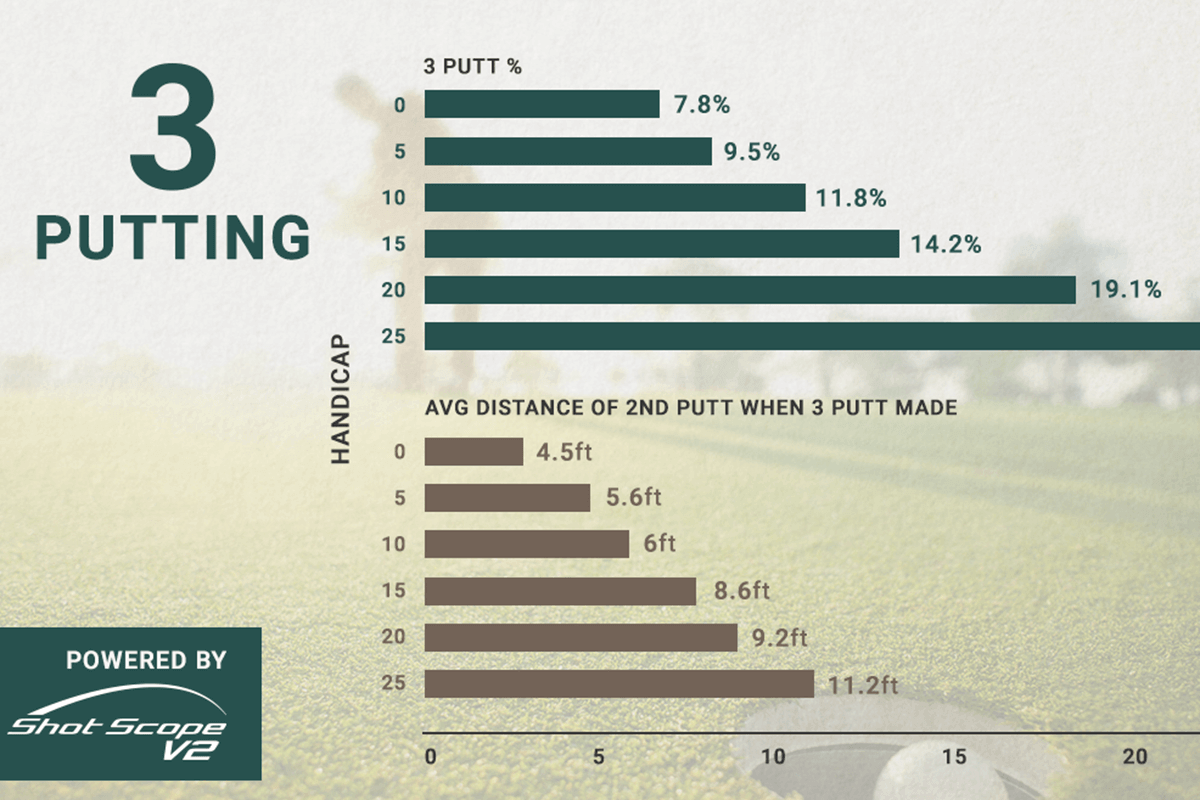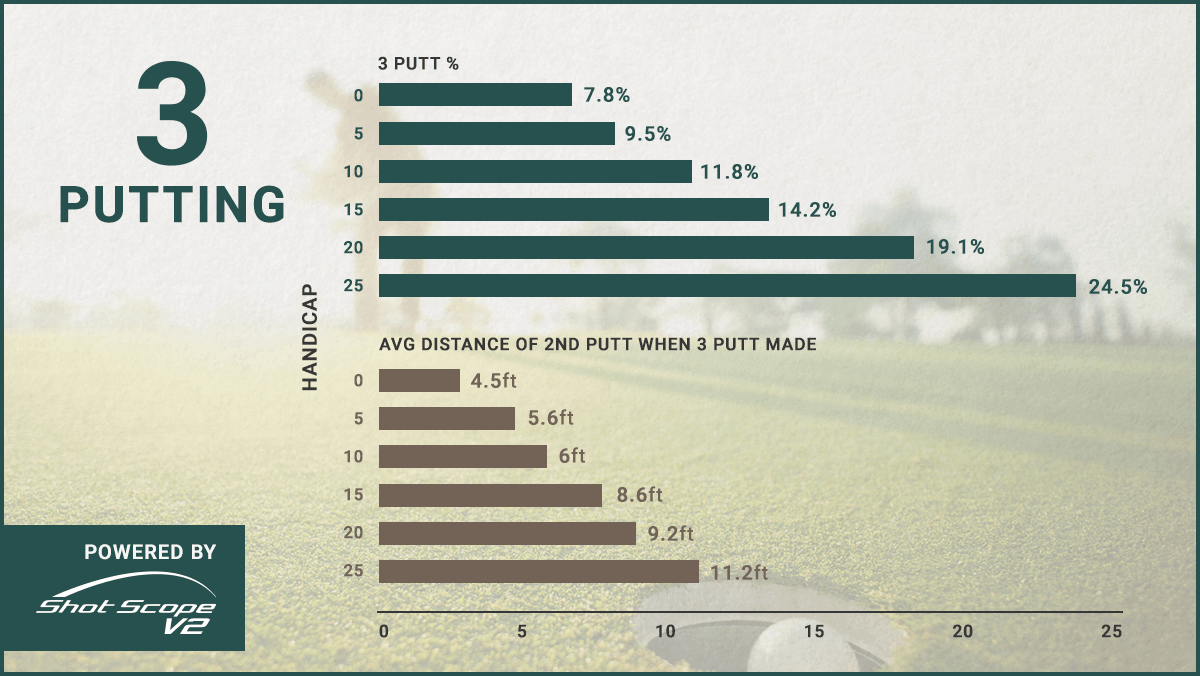Today we’re taking a fresh look at the anatomy of a 3-putt. Not only are we looking at the rate at which golfers 3-putt, we’re going to examine what’s been dubbed The Previous Shot Effect. It’s a fascinating concept that delves into the psychological impact of a poor first putt and how that influences subsequent attempts.
About the Data
Data for this study was provided by Shot Scope. The Shot Scope database currently contains data from 9 million golf shots collected over more than 250,000 rounds of golf. Shot Scope also tracks swings that don’t result in contact, which leads to some interesting stats. For example, did you know that, on average, golfers take 2 practice swings before hitting a real shot?
The Shot Scope performance dashboard provides a hub for golfers to analyze their performance data collected with the Shot Scope V2 GPS watch. The dashboard is laid out in interactive graphs and charts so that golfers can drill down into every aspect of their game. We encourage you to check out a demo of the Shot Scope Performance Dashboard.
Shot Scope V1 has been used on the European Tour and Ladies European Tour, and between V1 and V2 Shot Scopes have been played with in over 49 countries but over 70% of rounds have been played in the US, UK and Germany.
The Anatomy of a 3-Putt
Our first graphic contains two separate charts.
The top half of the chart (below) shows the 3-putt percentage at different handicap levels.
Observations:
- Scratch golfers 3-putt less frequently than higher handicap golfers. This isn’t particularly surprising.
- Scratch golfers 3-putt 7.8% of the time; higher than we’d expect.
- The difference in the rate of 3-putts widens as handicaps increase.
- 25 handicap golfers 3-putt nearly 25% of the time.
It makes one wonder why golfers spend so much time on the range instead of the putting green. Eliminating 3-putts entirely, while no simple task, would shave 4.25 shots of the 25 handicapper’s average score.
The graph on the bottom portion of the graphic shows the average 2nd putt distance left (distance remaining to hole after the first putt) on holes that result in a 3-putt.
Observations:
- It’s likely that longer 2nd putt distances are due to poor distance control, so it makes sense that the average 2nd putt distance increases with handicap.
- Shot Scope believes there’s a misunderstanding about what constitutes a good lag putt. The data suggests golfers should be happy when they hit their first putt to within 4 or 5 feet of the hole.
- While not included in the charts, it’s worth noting that 83% of all 3-putts have a first putt distance of greater than 32 feet.
The Previous Shot Effect
The following series of charts detail what Shot Scope terms the Previous Shot Effect. It’s a really interesting take on how the result of the previous shot impacts the one that follows. To a degree, it examines the psychological reaction to a poor shot and concludes that a bad first effort on the green may lead to a poor mindset that ultimately reduces the likelihood of making the next putt.
0-5 Handicap
The 0-5 chart (above) serves primarily as a reference. The data suggest that, for better golfers, there’s almost no difference in the make percentage following a shot that originated from off the green (an approach shot) and one that originated from on the green (putt).
6-15 Handicap
Observations:
- Even within a group that contains a majority of above average players, the Previous Shot Effect is pronounced.
- From within 2 feet, there’s a 6 percentage point difference favoring putts that followed approach shots vs putts that followed another putt.
- At distances of 9-10 feet, the make percentage following a shot that originated on the green is less than half of what it is following a shot that originated from off the green.
16-25 Handicap
Observations:
- While the make percentages drop at every distance compared to the previous chart, the Previous Shot Effect is relatively consistent with the previous group.
- This suggests that part of becoming a better player is letting go of bad shots before the effect the next shot.
The Takeaway
The last two graphs highlight the importance of the 1st putt on a green, especially from distance, and how quickly/easily shots can be lost. It also hints at the importance of having a short memory.
It’s entirely possible that a bad attitude is contributing to missed putts.
Given how make percentages decrease significantly with distance, whether it’s through practice or putter technology, the Shot Scope data suggests that improving lag putt distance control will ultimately lead to better scores and a lower handicap.


















Donn Rutkoff
6 years ago
I read Dave Pelz overly long putting book. He says distance accuracy on wedge (or other?) approach shots is the best way to shoot lower. The data from Tony here just add to this basic idea. After all, the goal on each hole is to actually finish, not piddle around with gimmies and such. Nice piece of work Tony and MGSpy. Thanks.